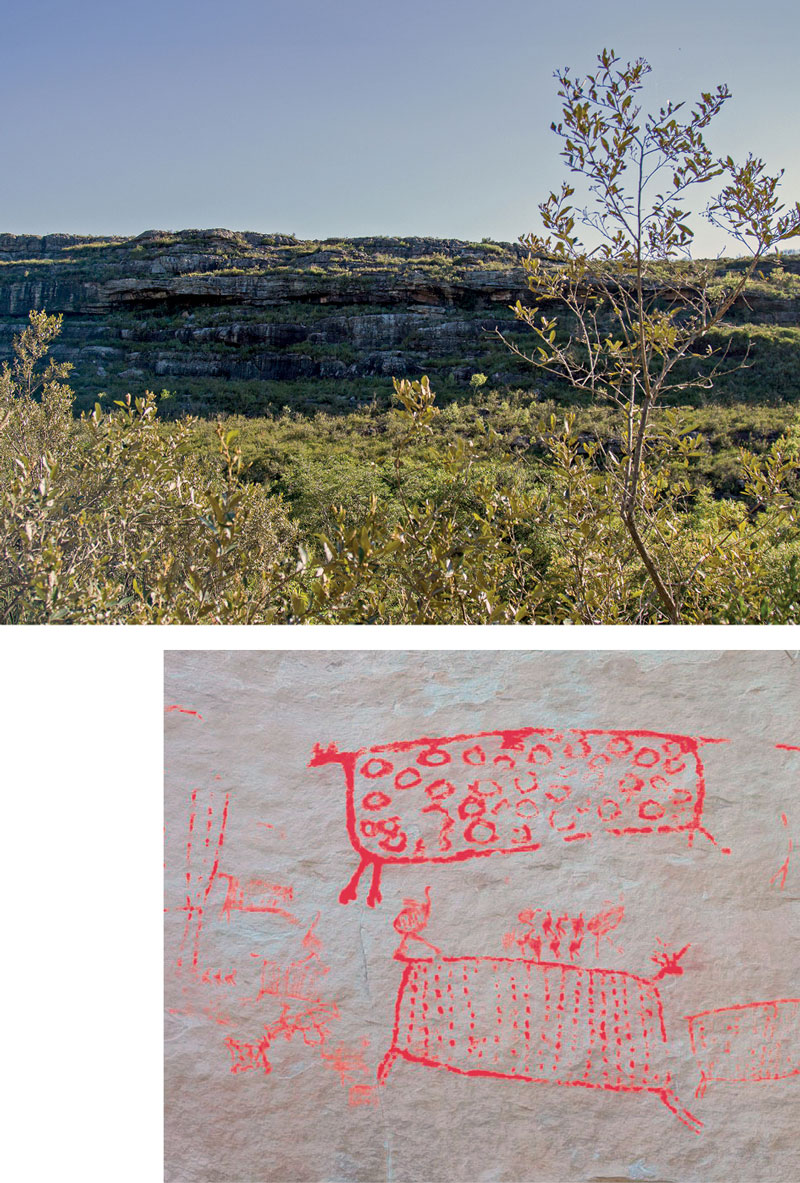
University Group for Speleological Research (Gupe) | Wellington Silva Nascimento / Wikimedia Commons Cave paintings (highlighted with a filter) in the Rio Quebra-Perna II cave (smaller photo), in the region that encompasses the Campos Gerais Park (larger photo)University Group for Speleological Research (Gupe) | Wellington Silva Nascimento / Wikimedia Commons
The Devonian Escarpment Environmental Protection Area, the largest conservation unit in Paraná, is known for its monkey puzzle trees, rocky outcrops, and canyons. Now, there are also archaeological treasures: more than a thousand figures on 277 rock walls at 52 archaeological sites, painted by Indigenous people hundreds of years ago. The cave paintings were cataloged by the University Group for Speleological Research (GUPE) from the State University of Ponta Grossa (UEPG). The group has more than 14,000 high-resolution photographs of the paintings, which include, in order from most common to least: incomplete figures and markings, geometric shapes, animals, people, plants, and handprints. “Learning about our past is a way to preserve our most primitive history, the roots of human occupation in Ponta Grossa and the region, and the history of the first people who lived here,” said UEPG geologist Laís Luana Massuqueto in a university statement (UEPG website, December 5, 2023).
Republish